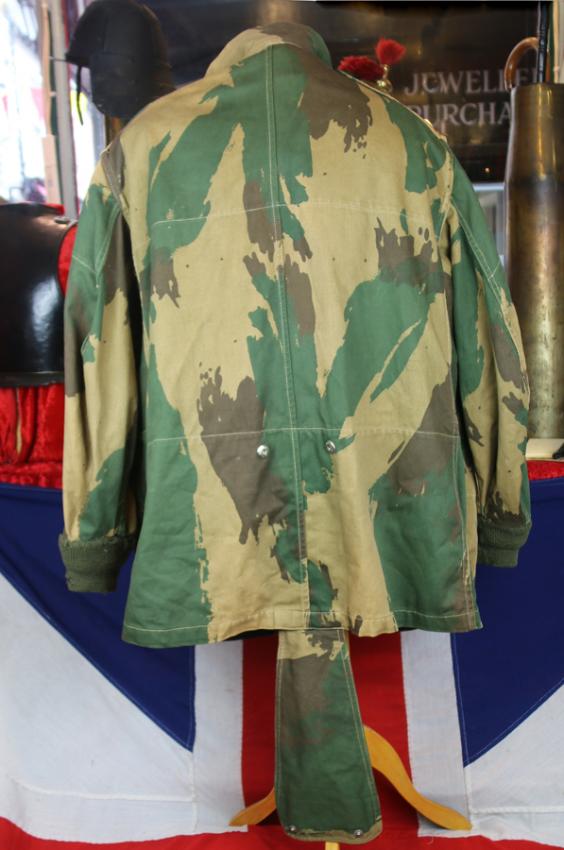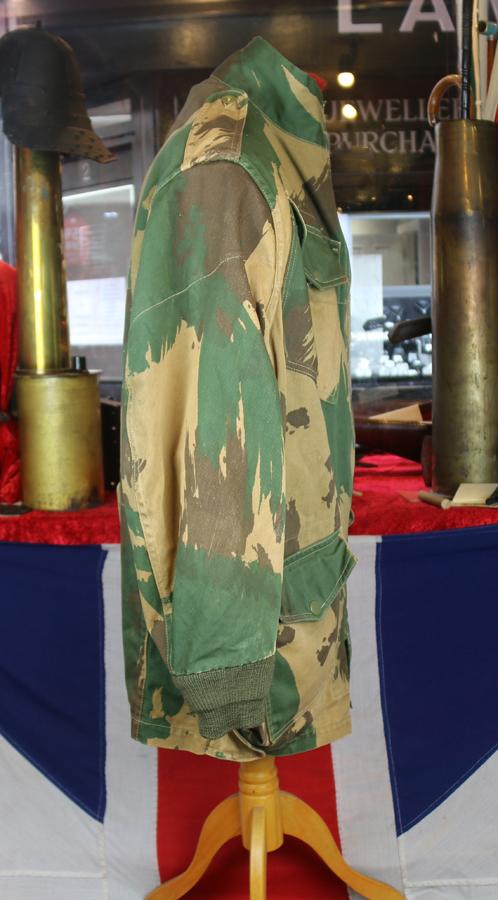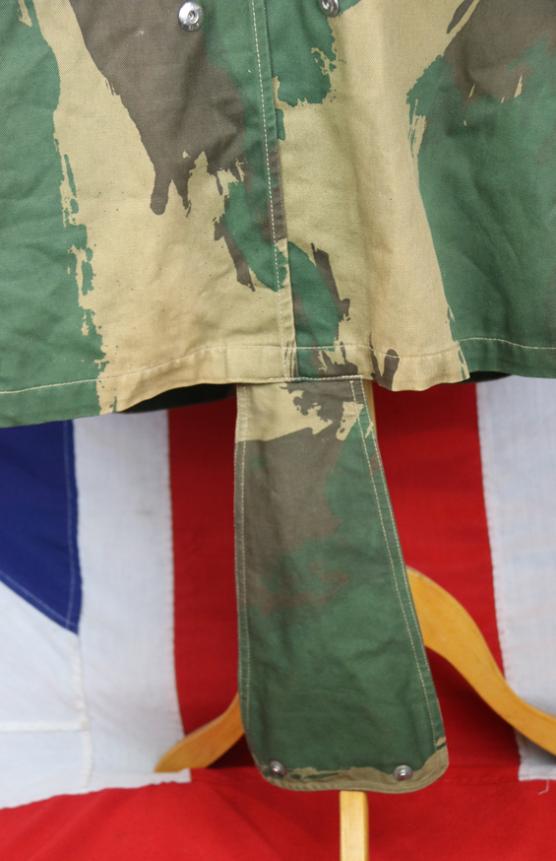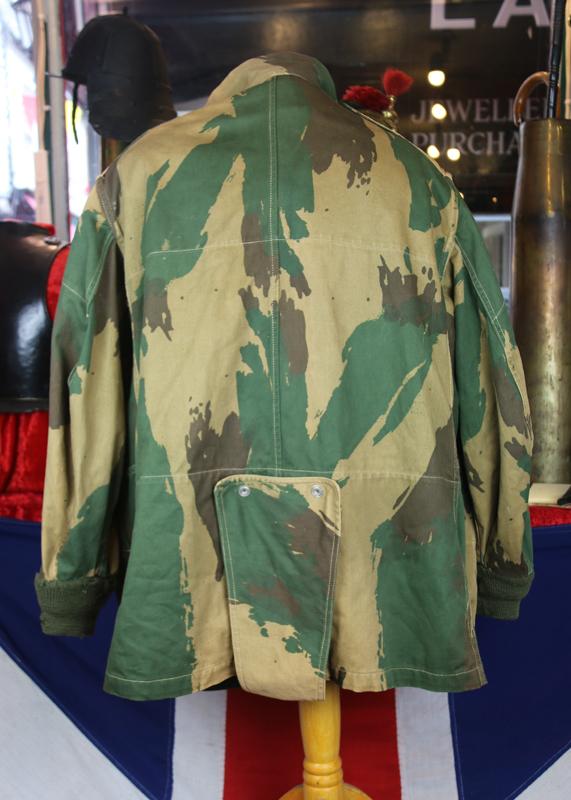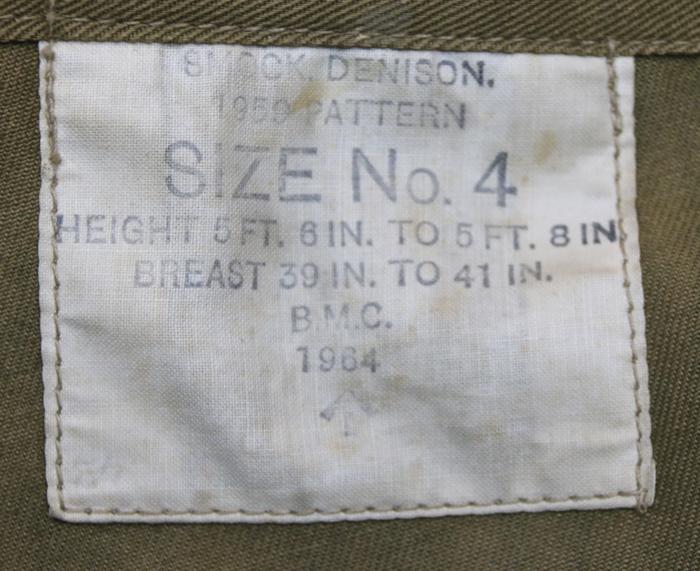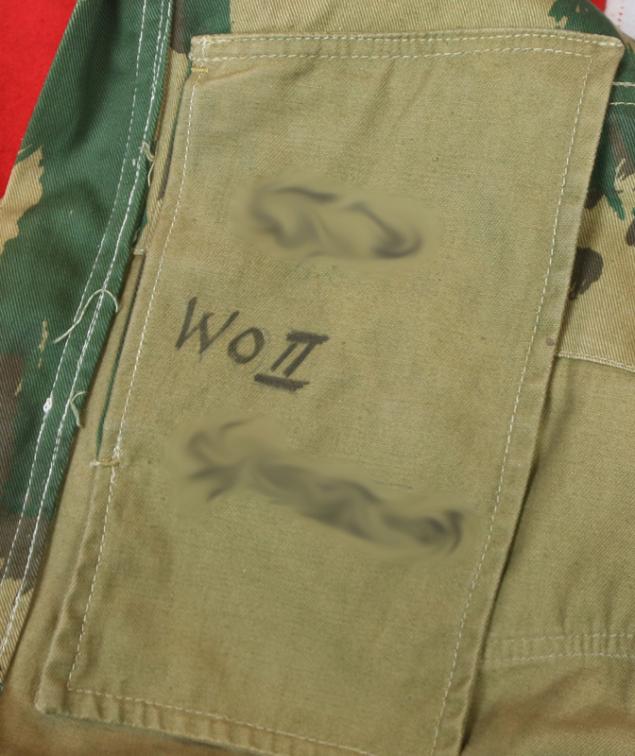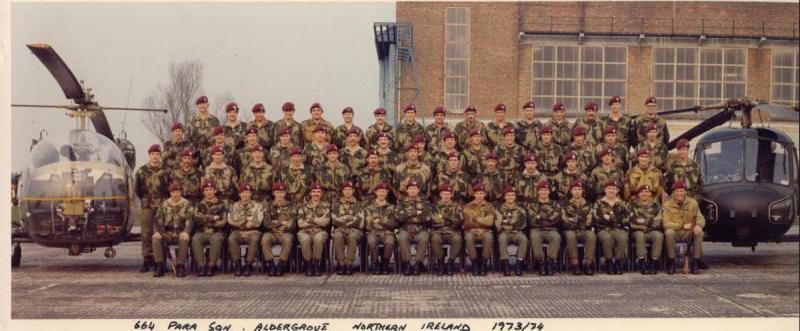Original British Army Paras Issue, 1959 Pattern, Parachute Regt. Warrant Officer's Denison Smock. Made For Government Contract By B.M.C. 1964. Operation Banner & Falklands War Period
One of two smocks from the same Para. Named to the WO who served between 1964 into the 80's. The first smock we sold immediately, and this we are offering was his second.
For campaign service used from Northern Ireland, in Operation Banner, to the Falklands War,
Operation Banner was the code name for the British military operation in Northern Ireland, lasting from 1969 to 2007, during the period known as the Troubles. It was the longest continuous deployment in British military history, involving over 300,000 personnel. The operation aimed to support the Royal Ulster Constabulary (RUC) in maintaining law and order amidst sectarian violence and political instability.
In 1982, the battalion was part of the force sent to the South Atlantic in Operation Corporate, as part of 3 Commando Brigade during the Falklands War. The battalion's men were the first troops from the main assault body to land on the Falkland Islands. The landing was on the shore at San Carlos Water (codename: Blue Beach). The battalion's first battle was the Battle of Goose Green on 28 May. This was followed by the Battle of Wireless Ridge and then the recapture of Port Stanley.
The Battle of Goose Green (Spanish: Batalla de Pradera del Ganso) was fought from 28 to 29 May 1982 by British and Argentine forces during the Falklands War. Located on East Falkland's central isthmus, the settlement of Goose Green was the site of a tactically vital airfield. Argentine forces were located in a well-defended position within striking distance of San Carlos Water, where the British task force had positioned themselves after their amphibious landing.
The main body of the British assault force was composed of the 2nd Battalion Parachute Regiment (2 PARA), commanded by Lieutenant-Colonel Herbert Jones. However, the BBC Radio broadcast news of the imminent attack on Goose Green, and the assault had to be urgently brought forward. Some, thus believe the BBC consider news more important than British service personnel’s lives. The BBC informing the world that the Argentine bombs were failing to detonate against UK ships due to wrong timing settings within the bombs was another subjective confirmation of this belief, once the Argentine forces changed their settings accordingly, and they then sunk our vessels successfully. Needless to say the BBC denied their assistance to Argentina brought about any unnecessary slaughter to our armed forces.
Knowing that this had likely forewarned the Argentinian defenders, the broadcast resulted in immediate criticism from Jones and other British personnel.
After the attack began in the early hours of 28 May, the 2 PARA advance was stalled by fixed trenches with interlocking fields of fire. Jones was killed during a solo charge on an enemy machine-gun post. The Argentinian garrison agreed to a ceasefire and formally surrendered the following morning. As a result of their actions, both Jones and his successor as commanding officer of the battalion, Major Chris Keeble, were awarded medals. Jones received a posthumous Victoria Cross, and Keeble received the Distinguished Service Order.
Just some of the history of the Parachute Regiment;
The 1st Battalion can trace its origins to 1940, when No. 2 Commando trained as parachutists. In 1941, the battalion was assigned to the 1st Parachute Brigade which also included the 2nd and 3rd battalions. The 1st Parachute Brigade was part of the 1st Airborne Division and remained with it throughout the war.
The battalion took part in operations in Tunisia in late 1942 to May 1943, suffering heavy casualties. The battalion and the brigade took part in Operation Fustian, when the Allies invaded Sicily and, again, suffered heavy casualties and was withdrawn to England in late 1943 to train and prepare for the Allied invasion of France. The battalion wasn't used in the initial invasion on 6 June 1944, D-Day, but was held back in the UK in reserve in case any of the five invasion beaches encountered serious difficulties and needed support. The plan turned out not to be required. During the fighting in Normandy numerous plans to drop the 1st Airborne were formed, none of which came to fruition. Finally, in September 1944, the battalion dropped into Arnhem the Netherlands with the rest of the 1st Airborne Division, as part of Operation Market Garden, where they suffered extremely heavy casualties and never saw combat again for the rest of the war.
After the war the battalion was reconstituted in 1946, and affiliated to the Brigade of Guards and served with the 6th Airborne Division in Palestine. It was disbanded in 1948, only to be reformed by the renumbering of the 4th/6th Battalion. The battalion was part of Operation Musketeer in 1956.
In the 1970s, the battalion first deployed to Northern Ireland in Operation Banner.
The battalion was involved in the NATO operation in Kosovo in 1999, Operation Agricola. In 2003, they were deployed to the Persian Gulf for Operation Telic in Iraq where despite overwhelming odds, two multiples of No. 8 platoon managed to fight their way out of the town of Majar al-Kabir. The Denison smock (or Smock, camouflage on later garments) remained on inventories in Commonwealth and other militaries after the Second World War, and was popular with troops in Korea. It remained standard combat dress for the Royal Marines and the Parachute Regiment until the mid-1970s . 1959 Para Smock Denison parachutist smock fish tail flap date 1964 size 1 knitted cuffs Beginning in 1959 the Denison smock was redesigned and the brushstroke pattern reconfigured. The 1959 pattern smock camouflage (and those produded thereafter) has a distinctively different look to it than the earlier Denisons, with a lighter and more prominent background, incorporating only two additional colours (usually brown and green) to create the basic brushstroke overprint. (WW2 era Denisons were darker and often appeared to incorporate more than two colours due to the blending and mixing of dyes that occurred during the application process.) These smocks were produced into the 1970s, and despite the standardization in manufacturing and printing technique, they still show much variation in colour and hue depending on when they were produced. The 1959 pattern Denison smock was worn primarily by members of the Parachute Regiment in theatres such as the Suez and Ulster (Northern Ireland), although there is evidence to suggest it was also issued in limited quantities to the Royal Marines (RM). and worn by British Special Forces , and US Special Forces in vietnam war too. The Denison smock (or Smock, camouflage on later garments) remained on inventories in Commonwealth and other militaries after the Second World War, and was popular with troops in Korea. It remained standard combat dress for the Royal Marines and the Parachute Regiment until the mid-1970s (see below), and changed little from the wartime issue. A full length brass zip had become standard - with no cloth flap to cover it - and the ever-popular knitted cuffs (deleted on the 2nd Pattern smock, but often imitated by sewing woollen sock tops to the cuffs), were reintroduced. The base colour of the camouflage pattern was now a lighter khaki shade. The "Newey" press studs changed from brass/copper to nickel-plated versions.
The 1959 Pattern Denison Smock.
The Denison was significantly modified in the 1959 Pattern. This had a higher hem line, and was much less baggy. This was because wearing it over the personal carrying equipment (but under the parachute harness) while parachuting was no longer the practice. The '59 Pattern retained the full length zip and knitted wool cuffs, but the flannel lining of the collar was changed from khaki to light green. The most obvious difference to the eye, however, was the change in pattern and colours of the camouflage. The pattern became less random, more defined, with broad, vertical brush-strokes, and greater contrast between the base light khaki and the overprinted tones. The green was much darker than previous versions, and the brown was now chocolate, rather than brick. Where green and brown overlapped, they formed a fourth, darker, olive brown colour.
The name of its wearer is confidential but will be passed to the next owner.
Code: 23664
595.00 GBP


